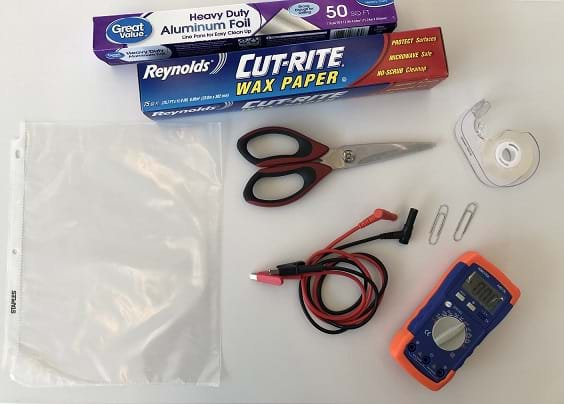Materials List:
Take a Seat!
Minimizing Pressure and Optimizing Comfort in School Chairs
 https://www.teachengineering.org/activities/view/uconn-2673-minimizing-pressure-optimizing-comfort-capacitance
https://www.teachengineering.org/activities/view/uconn-2673-minimizing-pressure-optimizing-comfort-capacitance
Minimizing Pressure and Optimizing Comfort in School Chairs
For teacher demonstrations (optional):
- touch-screen phone or tablet
- thin winter gloves
- 2 balloons, one small and one large
- wax paper and foil capacitance sensor
To make a capacitance sensor, each group needs:
- 3 pieces of wax paper, each cut into a roughly 29 cm x 21.5 cm (11.5 in x 8.5 in) rectangle (Link)
- piece of foil cut into a roughly 25 cm x 18 cm (10 in x 7 in) rectangle
- 2 pieces of foil cut into a rectangle with a tail, roughly 25 cm x 18 cm (10 in x 7 in) with a tail that sticks out about 4 cm (1.5 in) from the rectangle (Link)
- 2 pairs of scissors
- clear tape
- clear sheet protector (Link)
- 2 paper clips
- 2 rulers
- marker
To test a capacitance sensor (teacher can choose to have 1 set up for sensor testing or multiple), you will need:
- set of red and black alligator clips to banana plugs that have 1 meter wires (Link)
- capacitance tester OR digital multimeter that can measure capacitance in nanofarads (nF) (Link)
To make a seat cushion, groups can share:
- scissors
- gallon large Ziploc bags
- Any squishy materials that you can find including:
- foam
- packing peanuts
- cotton balls
- fabric
- cardboard
- packing materials like bubble mailers

 https://www.teachengineering.org/activities/view/uconn-2673-minimizing-pressure-optimizing-comfort-capacitance
https://www.teachengineering.org/activities/view/uconn-2673-minimizing-pressure-optimizing-comfort-capacitance